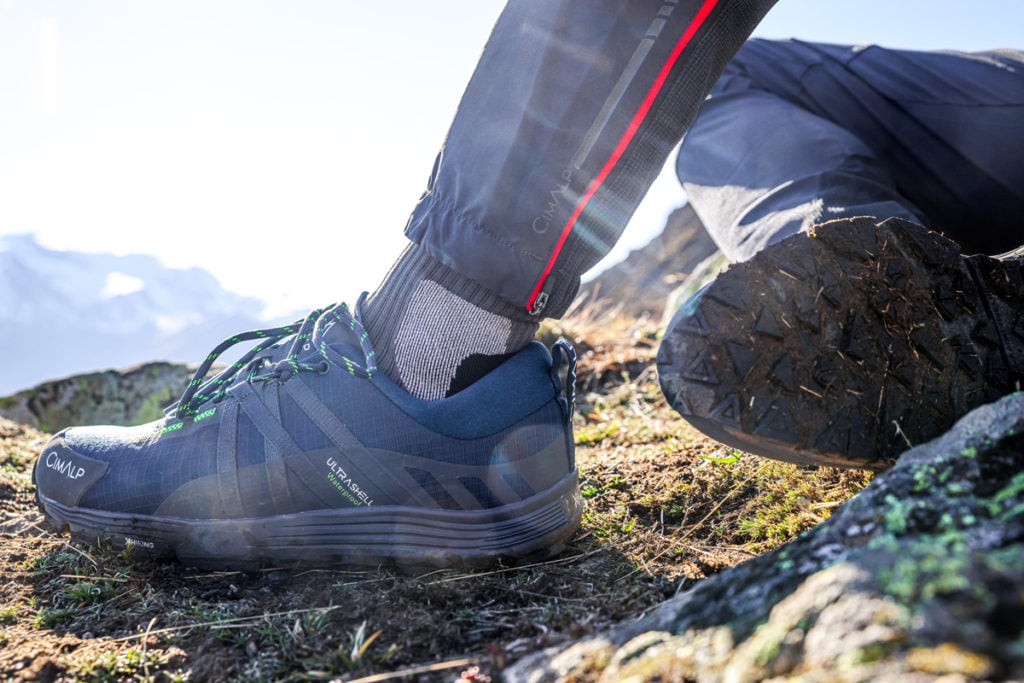The different types of hiking boots and their different uses
Each type of hiking has its own ideal shoe. Let's find out what type of hiker you are so that you can choose the right pair of shoes for you.

Choosing hiking boots is no easy task, and before you decide, you need to determine what type of hiker you are. Someone who hikes in the high mountains in cold weather, sometimes in bad weather, will not choose the same shoes as someone who occasionally goes out for a hike in the sun on the plains. There are different types of hiking boots, and to make the right choice there are different factors to consider, such as the terrain or even the weather conditions you will be facing. It is therefore important to determine the type of hiking you are about to do, so that you can choose the most suitable shoe for your needs. Before you buy a pair of shoes, you should ask yourself the right questions to make sure you make the right choice.
The right shoe for every terrain
The first question you should ask yourself before buying a new pair of hiking boots is what type of terrain you intend to hike on most often. Obviously you won't be changing shoes for every hike, and you won't be going out to the same place every time, but you can figure out more or less what type of terrain you'll be hiking on depending on where you usually hike on holiday or at the weekend. If you're buying for a trip, you'll probably already know what to expect.
Easy terrain: for short outings on flat or hilly paths, in the forest or on the plain, in any case on terrain that is not very steep and almost uneven, (and if you do not have any ankle problems, e.g. recurrent sprains) you can opt for low or mid upper shoes. This way, you will be more comfortable and lighter, and you will choose shoes that are supple and grippy, and in which your foot can breathe.
Medium mountain: for outings on slightly steep terrain, if you are going out for the whole day, it is important that your foot is well supported, so opt for shoes with a mid or high upper. The soles, equipped with crampons, should grip well on steep or rocky paths. Choose a comfortable model that is not too heavy for the climbs.
High mountains: for longer hikes in the high mountains, choose shoes with a high upper to secure your foot and ankle. Also pay attention to the quality of the sole and its crampons, it must grip and adhere well.
Technical and fast outings: opt for resistant low uppers that will offer you more lightness and better freedom of movement, to go faster. Pay attention to grip, cushioning and also to the support of the foot in the shoe.
Desert: in the desert, choose the lightest and most breathable low-cut shoes possible, why not hiking sandals. Make sure the sole has enough grip.
Snow or ice: winter high-top shoes will be your best allies, they should be waterproof, insulating you from the cold and damp to keep your feet warm. Make sure they are equipped with a waterproof-breathable membrane and that their soles are also insulating and equipped with crampons.

The right shoe for every distance
The second question you should ask yourself is how far you plan to run with your shoes. The longer the distance, the more you need to invest in quality shoes that are more durable and give your foot the best possible support.
Short hikes: low or mid top shoes are sufficient. They are versatile and suitable for simple strolls as well as for day hikes in the mid-range mountains. Flexible and light, they offer good grip and breathability. Waterproofing is a welcome addition, as is the stone guard.
Multi-day treks: On long-distance or multi-day treks, it is essential to choose high-top shoes with stone guards for better abrasion resistance and greater protection for your toes and feet in general. If they have lateral reinforcements it is even better. The shoe should be as comfortable as possible, and make sure it is waterproof and breathable.
What type of shoe for the weather?
The weather should also be taken into consideration when choosing your shoes. In fact, it is best to have two pairs of hiking boots, a lighter one for hiking in good weather and a waterproof one for winter outings.
In good weather: if you are only going for a few hours or a single day, and the ground is fairly dry or barely wet due to night rain or morning dew, waterproof shoes will do the trick (provided you don't have to cross rivers with your feet in water).
Bad weather: If it is raining or very wet, you need to make sure that your shoes are waterproof and protect your feet from both raindrops and moisture. This is why it is important that they are also breathable, so that sweat and moisture can escape from your shoe.
In cold weather, ice or snow: it is essential that your shoes are sufficiently warm and insulating to protect you from the cold as well as from wet ground. They should have a really high upper, be rigid, waterproof and breathable, and also have well insulated soles with crampons.
In hot weather: you can't wear shoes with high uppers, or even stiff ones, if it's really hot. If you're hiking on flat or hilly terrain that's not steep or rocky, you can opt for hiking sandals. They are open and are very practical for draining water or sand in the desert, for example, and are suitable for hot weather. Alternatively, lightweight and breathable synthetic shoes are an excellent alternative.
